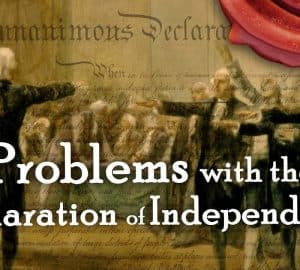
When the nation got word of his treason, they responded violently. He was condemned from all corners. As an early biographer wrote, “it became the passionate desire of a whole nation to blacken his character. Instantly he became an outcast and an outlaw. Every pen denounced, and every tongue cursed him.”1 Crowds burned his body in effigy, decrying him as a traitor. The Pennsylvania Packet asked, “Is there not stored in heaven’s wrath, some red hot thunder bolts to come hurling down with dreadful vengeance upon the unaccountable miscreant wretch, whose serpentine soul betrays his country, and sets the place of his nativity in flames?”2 Plans were laid to capture him and bring him to justice. It was said that they “would first cut off that lame leg, which was wounded in the cause of freedom and virtue, and bury it with the honors of war, and afterwards hang the remainder of [his] body in gibbets.”3

The honors given to Benedict Arnold were stripped from him. Fort Arnold, which he had commanded, was without delay renamed to Fort Clinton. His name was stricken from the roles of the army. Some Americans still commended his service to the cause, but used it as a lesson against treason by denying him the recognition that he had so desperately sought. Years later John Watts de Peyster, a general in the New York militia during the Civil War, commissioned a monument to Arnold for his service at Saratoga, but made it one of the strangest monuments in America. The monument is just a boot, and the inscription commemorates “the ‘most brilliant soldier’ of the Continental Army who was desperately wounded on this spot,” but omits his name. In the old chapel at West Point there are plaques for the generals of the War for Independence. But the one for Arnold lists nothing more than his rank and the year of his birth.4 They wished to wipe out the name of the traitor.

Not all Americans would even give him this much credit. The men who had once fought with him, and the historians that would follow, reinterpreted Arnold’s earlier service. It was said that he was always a dishonest coward, seeking nothing but fame. When he appeared brave, it had to be either drunkenness or insanity. They tried to explain how he had fooled them all for so long, and painted him as a sadistic child who spread glass in the path of his barefoot classmates and killed young birds for pleasure. Washington too revised his previous assessment of Arnold, saying, “From some traits of his character which have lately come to my knowledge, he seems to have been so hackneyed in villainy, and so lost to all sense of honor and shame, that, while his facilities will enable him to continue his sordid pursuits, there will be no time for remorse.”5
However, there may be more to the Americans’ condemnation of Arnold’s treason than first meets the eye. Historian Charles Royster wrote:
Pillorying Arnold’s effigy revealed a strong need to show how much Arnold differed from his countrymen. The qualities they attributed to him – weakness, madness, vice and greed – made him a traitor. Their own qualities – native courage and public virtue – made them patriots. His treason threatened American independence and liberty. Their patriotism sustained American independence and liberty.6

The American officers felt the need to differentiate themselves because many of them were not too different from Benedict Arnold. Many of the officers were focused on profiting from the war, whether in money or glory, by fair means or foul. There were exceptions to the rule and many officers did serve for the good of the country, but the American high command was characterized by constant bickering over rank and promotion. In 1777 what was called the Coway Cabal was discovered, in which high ranking officers and politicians criticized Washington to the point of considering his removal from command. With Arnold’s treason the Americans expressed shock and horror that he had gone to such lengths in pursuit of what many of them were themselves seeking. Nathaniel Greene wrote:
Was you ever more astonished in your life? A man high in reputation and with the fairest prospects of domestic happiness. The love of parade and the thirst for gold has proved his ruin. How black, how despised, loved by none, and hated by all. One his Country’s Idol, now her horror. Curse on his folly, nay his villainy, and most of all his meanness. … I had no conception … that it was possible for human nature to arrive at such a degree of corruption.7
Some examined each other, wondering who else may have been looking to betray their nation. Alexander Scrammell wrote,
We were all astonishment, each peeping at his next neighbor to see if any treason was hanging about him: nay, we even descended to a critical examination of ourselves. The surprise soon settled down into a fixed detestation and abhorrence of Arnold, which can receive no addition.8
In remembering the War for Independence it is important to realize that the heroic generals were far from spotless. One of the nation’s greatest heroes was turned into her greatest villain, and the contrast between Benedict Arnold’s avarice and the other generals’ patriotism was not quite as clear as they would have liked to believe.

1. The Life of Benedict Arnold: His Patriotism and Treason by Isaac N. Arnold (Chicago: A. C. McClurg & Company, 1905)
2. The Revolutionary Era: Primary Documents on Events from 1776 to 1800 by Carol Sue Humphrey (Westport, CT: Greenwood Press, 2003) p. 89.
3, Ibid, p. 85.
4. “Whom can we trust now?” The Meaning of Treason in the United States from the Revolution through the Civil War, by Brian F. Carso, Jr. (Lanham, MD: Lexington Books, 2006) p. 155.
5. The Writings of George Washington edt. Worthington Chauncy Ford (New York: G. P. Putnam’s Sons, 1890) vol. VIII, p. 494.



